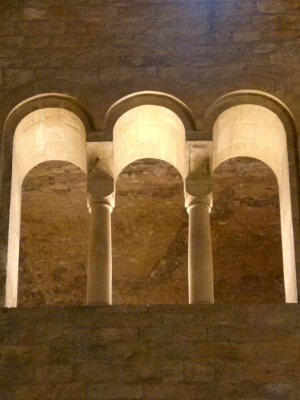A stone’s throw from the east end of the Cathedral of Saint Vitus stands the smaller but no less significant Basilica of Saint George (Bazilika svatého Jiří). Founded in 920 by Duke Vratislav I, the basilica was one of the earliest Christian churches in Prague, acting as the burial-place of the Přemyslid dynasty until the early 11th century. Among its several notable tombs is that of Ludmila, the grandmother of Duke Wenceslas, whose murder in 921 made her Bohemia’s first Christian martyr.
Not long after its foundation the church became associated with the Benedictine convent of Saint George, whose abbess was granted the unusual privilege of crowning successive consorts of Bohemia’s kings. Despite this historic role, the convent was dissolved at the end of the 18th century as part of the Edict of Tolerance of Josef II. Until comparatively recently the cloister housed part of the National Gallery’s collection of baroque art.
The West End of the basilica itself presents an unusual mix of styles, with the terracotta-coloured facade a somewhat unsympathetic addition from 1657 by Francesco Caratti. Behind this showy exterior, however, the romanesque nave and chancel dating from 1142 are a lesson in simple aesthetics. Also from the twelfth century come the clean lines of the two white limestone towers, nicknamed Adam and Eve – a prominent part of the skyline of Prague’s castle complex.
Published by the Prague Vitruvius.
published: 12. 2. 2017







